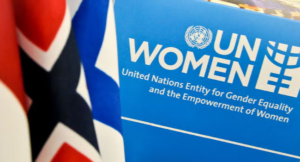
Although the number of journalists killed around the world has declined, far too many are still paying the ultimate price for their reporting.
United Nations Educational, Scientific and Cultural Organisation’s (UNESCO) deep concern about the increasing risks faced by media workers outside of conflict settings, and persisting impunity for these attacks, will be the focus of a roundtable scheduled to hold on November 3.
In a statement by UNESCO, “The main event to celebrate the 2021 International Day to End Impunity for Crimes against Journalists will be a hybrid format high-level roundtable discussion, organised by Ossigeno per l’informazione and supported by UNESCO, on November 3, 2021 at the Syracuse International Institute for Criminal Justice and Human Rights in Syracuse, Italy.
The event will provide a platform for dialogue among prosecutors and journalists on prevention and protection measures to address the safety of journalists, and it will highlight the instrumental role of prosecutorial services in investigating and prosecuting not only killings, but also threats of violence against journalists.”
The agency, “ in 2018-2019, UNESCO recorded a total of 156 killings of journalists worldwide. Overall, in the past decade, a journalist has been killed on average every four days. 2019, however, showed the lowest death toll recorded by UNESCO in the last decade with 57 deaths,” the agency’s statement noted.
“Impunity for crimes against journalists continues to prevail. 2020 saw a slight decrease in the rate of impunity, with a percentage of 13 per cent of cases worldwide reported as resolved in comparison to 12 per cent in 2019, and 11 per cent in 2018.
“In 2019, the highest number of fatal attacks occurred in the Latin America and the Caribbean region, representing 40 per cent of the total killings registered worldwide, followed by the Asia and the Pacific region with 26 per cent of killings.
“In 2020, 71 per cent of member states reacted to the Director-General’s request, marking a 10 per cent increase in comparison to the previous year.”
UNESCO said, “most journalists were killed in countries with no armed conflict: In 2018-2019, 89 journalists were killed in countries with no armed (54 in 2018; and 35 in 2019). The numbers killed in countries with armed conflict was 67 (45 in 2018 and 22 in 2019).
“Between 2006 and 2020, over 1,200 journalists have been killed around the world, with close to nine out of 10 cases of these killings remaining judicially unresolved, according to the UNESCO observatory of killed journalists.
“Impunity leads to more killings and is often a symptom of worsening conflict and the breakdown of law and judicial systems. UNESCO is concerned that impunity damages whole societies by covering up serious human rights abuses, corruption, and crime. Governments, civil society, the media, and everyone concerned to uphold the rule of law are being asked to join in the global efforts to end impunity.
“It is in recognition of the far-reaching consequences of impunity, especially of crimes against journalists, that the United Nations General Assembly adopted Resolution A/RES/68/163 at its 68th session in 2013, which proclaimed November 2 as the ‘International Day to End Impunity for Crimes against Journalists’ (IDEI).”
The Resolution urged member states to implement definite measures countering the present culture of impunity.
The date was chosen in commemoration of the assassination of two French journalists in Mali on November 2, 2013.








